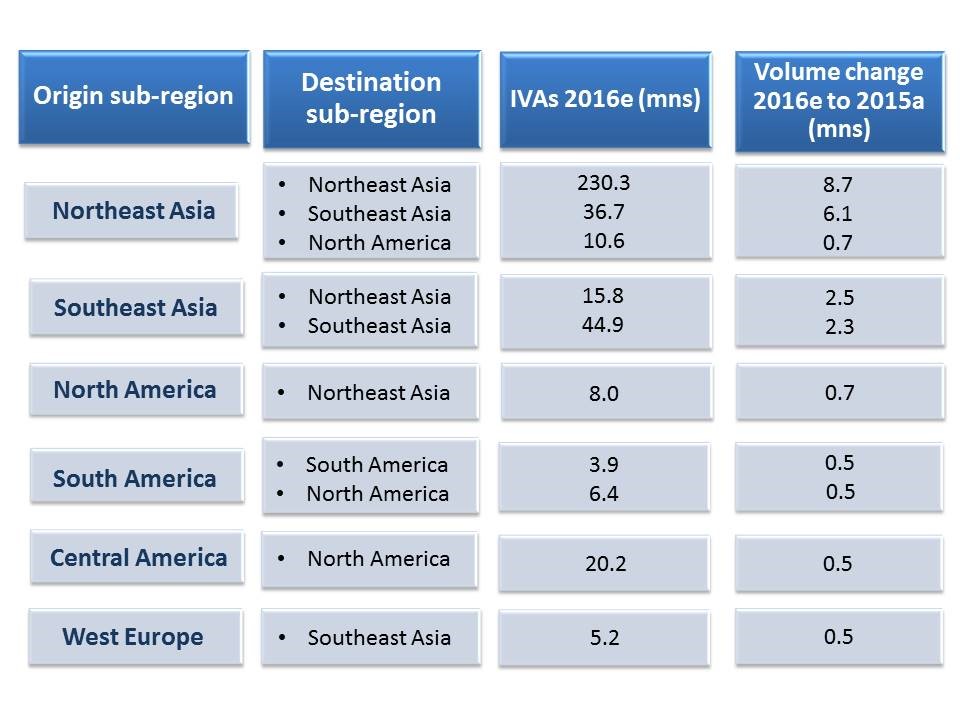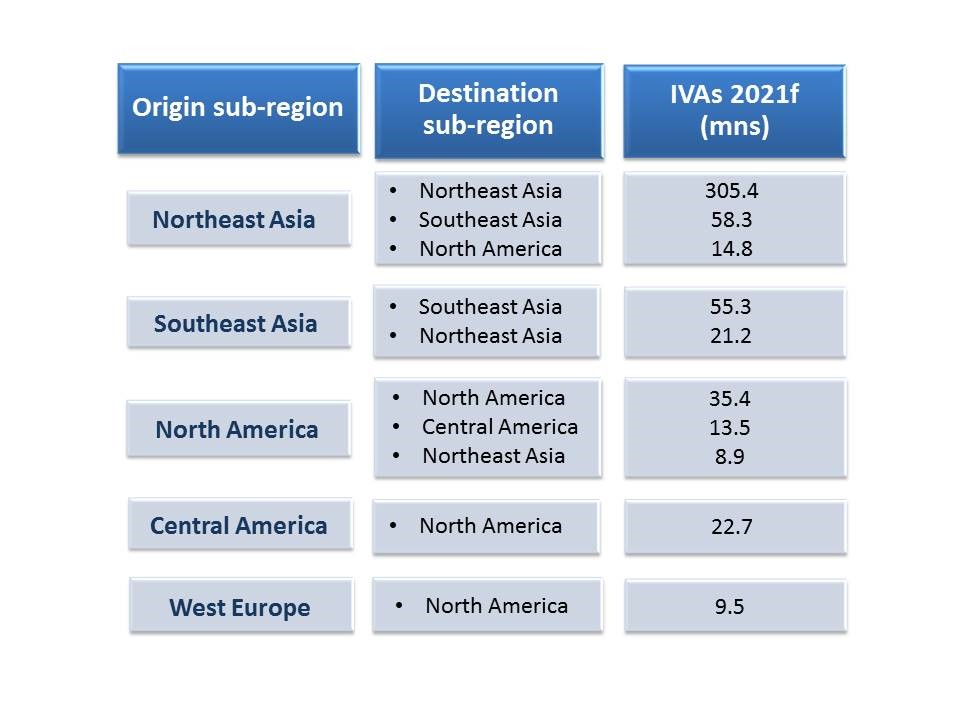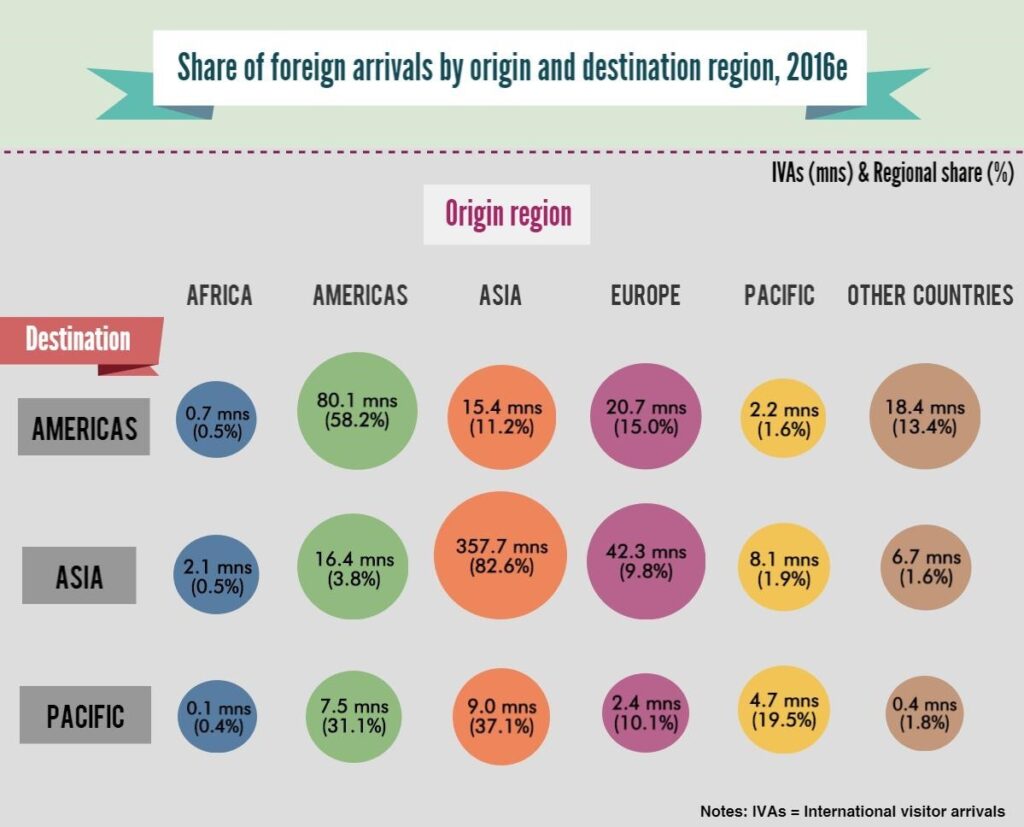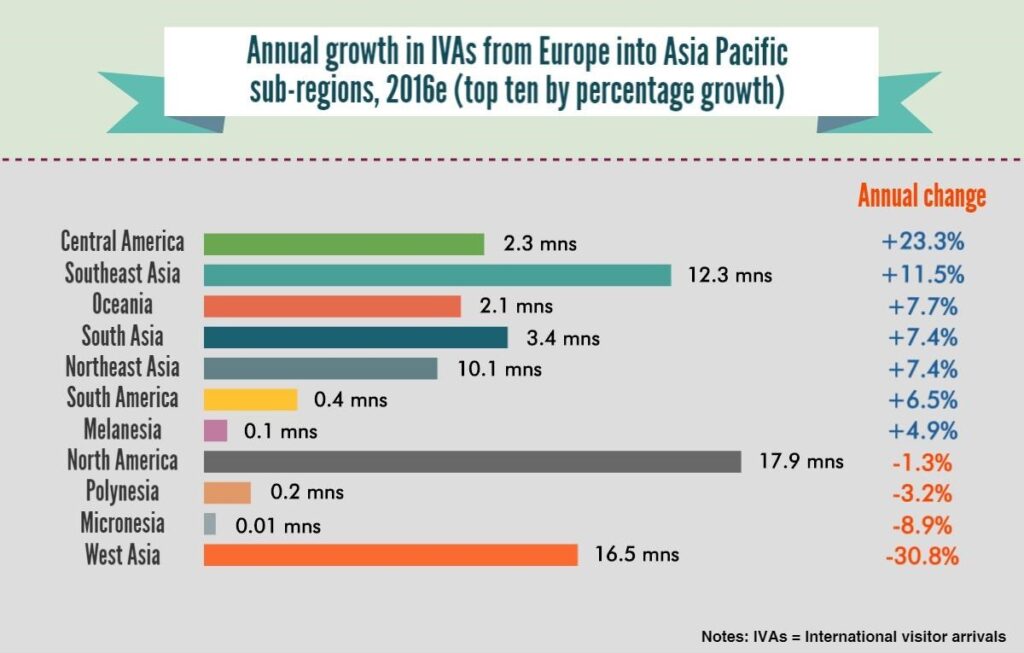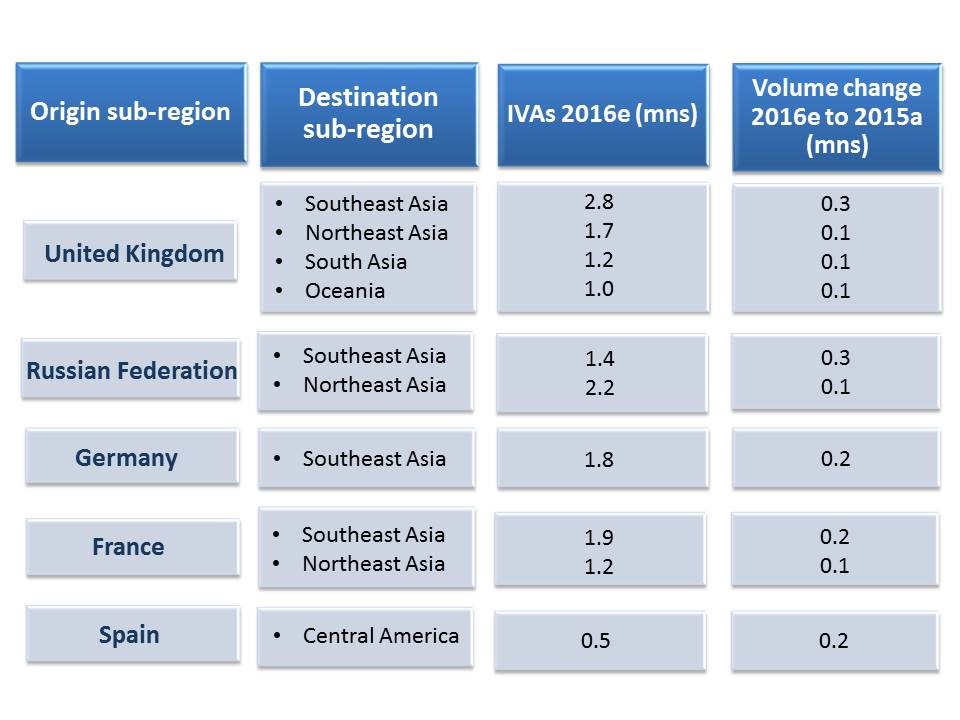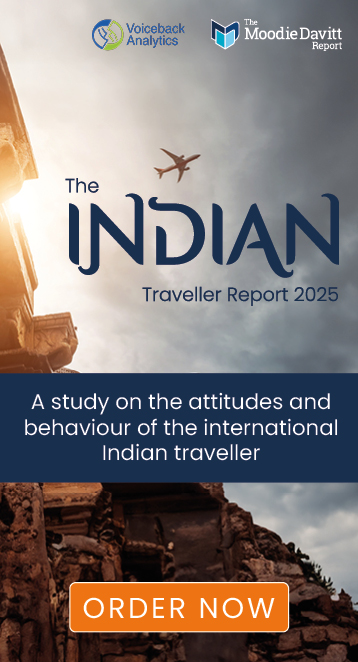ASIA PACIFIC. Visitor arrivals to Asia Pacific will climb by +5% a year to 2021, according to the latest forecasts by the Pacific Asia Travel Association (PATA).
Over the five-year forecast period, foreign arrivals to Asia Pacific destinations will reach around 758 million, from an estimated 2016 figure of 595 million (see below).
By the start of the next decade the Americas (as defined in the report) will receive 156 million foreign arrivals annually while Asia can expect to receive over 573 million. The Pacific region is forecast to receive over 28 million foreign arrivals annually.

The average annual growth rate of +5% for Asia Pacific destinations is driven largely by the 5.8% average growth rate into the Asia region which, by 2021, will account for over three-quarters of all foreign arrivals to Asia Pacific destinations.
The Americas and Europe will also be significant generators of foreign arrivals, the former numbering a little under 117 million by 2021 and Europe totalling over 76 million.
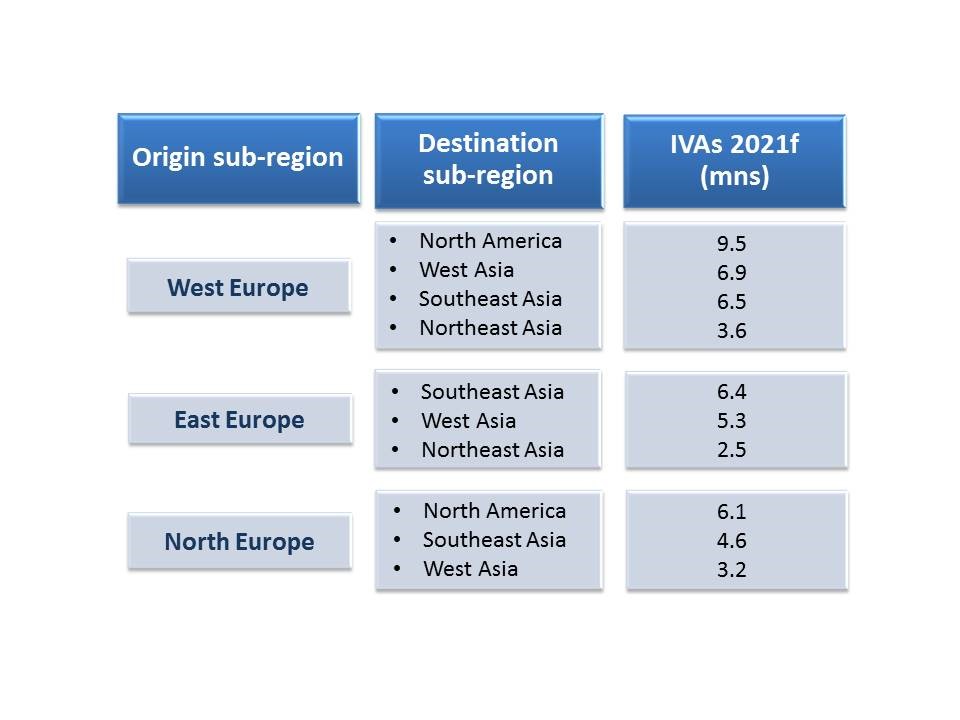
The intra-regional flows within Northeast and Southeast Asia, as well as the bi-directional flows across these two sub-regions, will continue to dominate the growth pattern in 2021 with the Northeast Asia-to-Northeast Asia flows alone numbering over 300 million in that year.
The origin markets of Western, Northern and Eastern Europe will grow over the forecast period. Western Europe will lead the way with an estimated volume to the Americas of almost 9.5 million arrivals in 2021.
West Asia is expected to see a return to growth in 2021 with West, East and North Europeans all showing substantial volumes to that destination in 2021. Southeast and Northeast Asia will also see significant arrivals from Europe.
The PATA forecast, which will be released next month, contains predictions for international visitor arrivals to 39 destinations within the region for the period 2017 to 2021.
The destinations that are covered by these forecasts account for around 98% of the total inbound foreign arrivals into Asia Pacific destinations, as reported by PATA.
Estimates for 2016
Based on year-to-date data and the forecasts for 2016, PATA estimates that Asia Pacific will return a combined inbound count of around 595 million foreign inbound arrivals for last year. This would represent a growth rate of 3.4% over 2015 and an annual volume increase of more than 19.6 million arrivals.
Based on data available for the year, Asian source markets in 2016 contributed a 64.2% share, followed by the Americas (17.5%) and then Europe (11.0%).
While the Pacific had the strongest annual growth rate as a supplier of foreign arrivals (+6.1%), this was off a relatively small base, with volume a little over 861,000.
Asian source markets had both a strong annual growth rate (+5.2%) and a large volume; the increase in foreign arrivals between 2015 and 2016 equated to more than 19 million. This represents 97% of the net gain in additional foreign arrivals between 2015 and 2016.
There was significant variation in the dominant suppliers into each of the Asia Pacific regions however, with intra-regional flows for example, accounting for 58% of arrivals into the Americas (Americas to the Americas), and 82.6% of arrivals into Asia (Asia to Asia). In both cases the intra-regional flows showed the strongest volume gains in foreign arrivals in 2016, relative to 2015.
The Pacific region broke this intra-regional dominance trend with the majority of foreign arrivals coming from Asia (37.1%), followed by the Americas (31.1%).
At the sub-regional level intra-regional flows in Northeast and Southeast Asia generated significant increases in arrivals between 2015 and 2016.
European source markets were generally strong into most of the Asia Pacific sub-regions with the exception of West Asia, specifically Turkey.
The strongest European volume growth came from West, North and East Europe into Southeast Asia, but these increases were only just sufficient to cover the loss in arrivals from Europe into West Asia (-7.331 million). The result is that the overall flows from Europe into Asia Pacific changed marginally in the year relative to 2015.
The strongest individual European markets in 2016 were the UK and the Russian Federation into Southeast Asia, both of which increased their relative arrivals count into the sub-regional destination by more than a quarter of a million. These were followed by Germany, France and Spain which increased substantially their arrivals into Southeast Asia and Central America.
PATA CEO Dr. Mario Hardy said: “The importance of the Asia Pacific region, both as a receiver and a generator of international arrivals, has been evident for some time and the momentum certainly appears to be holding over the next five years.
“With the maturing of many Asian source markets, destinations beyond the Asia Pacific region are also being increasingly explored. However, these destinations need to be ready to deliver a service that the increasingly sophisticated Asian traveller has already experienced in Asia and is now seeking in destinations further afield.”
